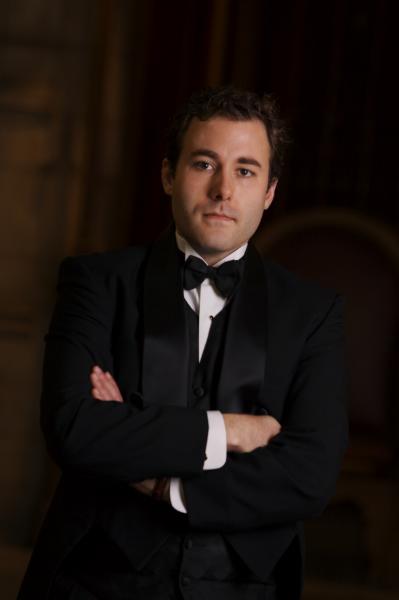Kallembach’s “St. John Passion” provides mixed rewards at Rockefeller Chapel
James Kallembach’s St. John Passion returned to the Quire & Place series at Rockefeller Chapel, where it first premiered on Passion Sunday two years ago. Saturday’s concert marked the work’s CD release on the Naxos label.
Kallembach’s Passion is unusually structured. The narrative taken from the Gospel of John moves in two time streams: movements proceeding from the deposition to Christ’s burial alternate with movements proceeding from His capture to His death on the cross.
Between each pair of traditional passion movements, a pair of non-Gospel movements is interspersed. One is a series of choral settings of Blake’s “The Sick Rose,” the other a series of literary meditations on evil: Faust’s first encounter with Mephistopheles, a soliloquy of Lady Macbeth’s, and the closing passage of Dante’s “Inferno.”
Each of these texts is set in a different musical style. The burial is narrated by the choir in quasi-Medieval chant, to the chiming of tingsha (Tibetan-style hand cymbals). By contrast, the Crucifixion section is recited over dissonant pulsing music for string quartet. The Blake settings are written in a modern choral “art song” style; and the literary excerpts in a more operatic idiom.
Listeners expecting Bach-like word-painting sensitivity are likely to be disappointed. In the Gospel passages, Kallembach’s text-setting is highly declamatory. The speech-like phrases that the Evangelist sings almost never rhetorically underline the crucial words in her narration. The beatings, the torture, the agony are all reported with an almost documentary-like tone of “objectivity.”
How much one enjoys this largely anti-dramatic approach depends on how much distance one wants to feel from the narrative. But certain small touches re-inject drama into the proceedings, the most effective of which is Kallembach’s treatment of Christ himself. His words are sung by a rotating trio of soloists from the choir, who create a distinctly not-of-this-world sound.
For this performance, Kallembach himself conducted the Rockefeller Chapel Choir, the Avalon String Quartet, and a quartet of vocal soloists, consisting of soprano Kaitlin Foley, mezzo-soprano Clara Osowski, tenor Matthew Dean, and bass-baritone Andrew Schultze.
The lion’s share of the solo work fell to Foley, who played the Evangelist. She did not always project well and at times was covered even by the string quartet alone. But when she was audible, her sound was consistently lovely, her tone crystalline and well-modulated.
The other standout among the vocal soloists was Dean, who successfully altered his delivery to embody such diverse characters as the sardonic Faust and the grandstanding Pontius Pilate.
Kallembach and the choir preceded his Passion with three shorter selections: two settings of the motet “Lobet den Herrn, alle Heiden” sandwiching a setting of the Salve Regina.
Bach’s setting of the motet was accompanied by Rockefeller Chapel organist Thomas Weisflog. Perhaps because of the acoustics of the chapel, the counterpoint was fitfully muddled but this was a dynamic and lively rendition, nonetheless, which captured the spirit of the piece.
The Salve Regina was Tomas Luis da Victoria’s setting for eight voices, which received an immaculate performance of this consummately crafted music.
The second setting of “Lobet den Herrn, alle Heiden” was by Kallembach’s former teacher Sven-David Sändstrom. This version opens with complex interlocking rhythms, and includes a very difficult-to-tune middle section. But Kallembach and the choir pulled off both sections admirably, seemingly without the least bit of strain.
Posted in Performances


